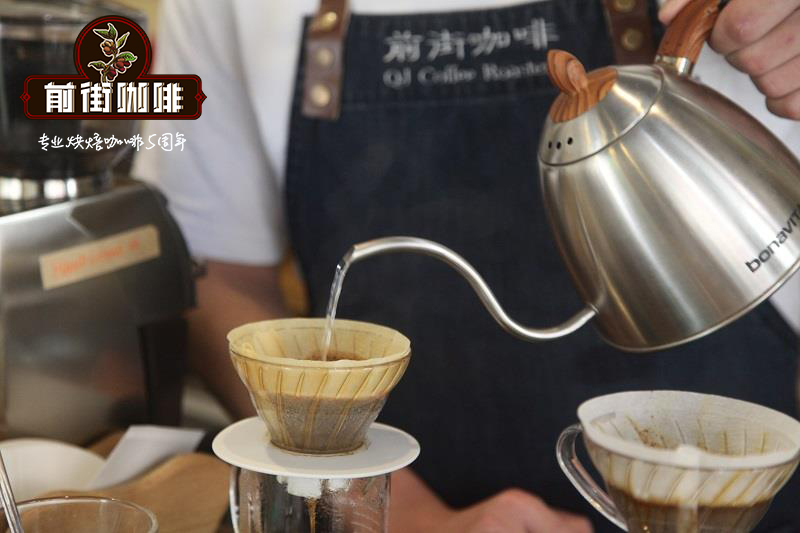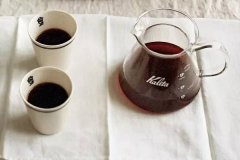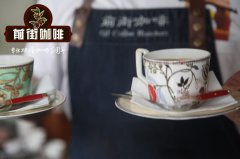How long does it take for a barista to learn? What knowledge and skills baristas need to know?

Professional coffee knowledge exchange more coffee bean information please follow the coffee workshop (Wechat official account cafe_style)
Barista _ barista training _ barista skills
Know where coffee beans come from.
Coffee beans are actually seeds in the coffee fruit that grows on the coffee tree, which looks like a cherry. Coffee trees grow until they begin to blossom (similar to jasmine), but only last a few days. After the flowers withered, all that was left was a small green coffee fruit. These green fruits will change from yellow to red and darker red, or even to almost black. Generally speaking, the fruit can be picked, selected and transported to the workshop for processing within 6-9 months.
First, the fruit removes the seeds in one of two ways, a natural (or called solarization) method or a water washing method.
Sun method-dry the cherries in the sun. Once dried, the pulp will be separated from the coffee beans. Mechanical peeling machines are usually used in this process.
Water washing method-consists of an excellent immersion method. The coffee beans processed in this method are also called washed coffee. Then the raw coffee beans are dried, graded and selected. Finally, raw coffee beans are graded, packaged and shipped to bakers around the world.
Insolation
Water washing
Two main types of coffee beans
Arabica-Arabica coffee beans mainly grow in high altitude areas, they can have the greatest flavor and aroma. Arabica coffee beans are relatively half the caffeine of Robusta coffee beans. Arabica coffee beans account for 75% of the world coffee trade, but only 10% can meet the standard of fine coffee.
Robusta-Robusta beans that grow at low altitudes are easier to grow than Arabica beans that grow at high altitudes. They produce more and produce more bitter flavors. They are usually used at a lower cost or when extra caffeine is needed. In many cases, Italian blended beans will add a small amount of Robbata beans to give them extra crema and taste layering.
Mixing several types of coffee beans will produce the best mix of beans. Mix them so that they balance each other to provide the best flavor and aroma.
Because of the short time of contact with water, espresso has less than half the caffeine than coffee brewed in the usual way.
Decaffeinated methods
To avoid some of the effects of caffeine, three methods are designed to remove up to 97% of caffeine from coffee beans.
Traditional method-this process involves soaking coffee beans in a chemical solvent to remove caffeine. However, this method is no longer used because of health problems.
Swiss water method-this process begins by soaking coffee beans in hot water. After the hot water extracts the flavor of the beans, it passes through a carbon filter and blocks and removes the caffeine from it. Finally, the beans are added to the water, and the coffee flavor retained by the caffeine will be dissolved into the beans by the water.
Carbon dioxide method-this process removes caffeine by pressurizing and cooling liquid carbon dioxide, such as a combination of gas and liquid. However, the equipment required for this process is very large and expensive, so it is very difficult to use this method to make small batches of beans at a time or if there is not enough space. This method is usually chosen not because of taste, but because of relationships that need to be dealt with a lot.
Baking and blending
Drum baking-heat the drum with gas (liquefied petroleum gas) or wood and turn the drum when baking coffee beans. When the desired baking degree is reached, the beans are poured into a container to cool so that they do not overbake.
Hot air baking-roll coffee beans in hot air to roast.
A smaller drum roaster
Coffee beans usually need to be roasted at about 400 degrees Fahrenheit / 205 degrees Celsius.
Light roasting-generally not used in espresso (espresso) and has a strong sour taste.
Deep baking-has a more comprehensive flavor. The darker the roast, the more you will taste the burnt taste rather than the coffee itself.
Very deep roasting-with a smoky taste, it is more suitable for brewing ordinary coffee.
Once coffee beans come into contact with the air, they begin to deteriorate. If properly preserved, coffee beans can be kept fresh for 7-10 days. Coffee beans need to be stored in a cool, dry place and in sealed containers that avoid direct sunlight. Also do not store in the refrigerator, because coffee beans will absorb other flavors, which will affect the taste of the coffee itself.
Espresso machine (espresso machine)
Manual espresso machine-this type of coffee machine requires a lever operated by the barista. When the lever is pulled down, the water is forced to quench the coffee through the coffee powder.
Semi-automatic espresso machine-this type of coffee machine needs to be manually controlled by the barista. The barista must use the electronic switch on the coffee machine to control the start and stop of quenching coffee. During the quenching process, the barista needs careful observation and timing to control the taste of the coffee.
Fully automatic espresso machine-this type of coffee machine is programmed to adjust the amount of water from each quenching. The barista must set up the correct quenching and then press the program button to start the quenching process. Baristas still need to watch carefully to ensure that the quenching is running properly and that the program will stop at the right time.
All espresso machines must produce a pressure of 130lb (Psi) / 9 Bar and be able to reach between 192-203F / 89-95F.
Coffee machine brewing part or head-sometimes referred to as brewing part or head. Brewing the head is the main part of all the magic generated by the coffee machine. After inserting the brewing handle, this is the part that quenches the espresso. The outlet of the brewing head uses the diffusion plate to pressurize the hot water and flow through the fresh and packed coffee powder to make a strong espresso.
Notice of rule adjustment and explanation of important adjustment contents of 2018WBC World Barista Competition
Important Notice :
前街咖啡 FrontStreet Coffee has moved to new addredd:
FrontStreet Coffee Address: 315,Donghua East Road,GuangZhou
Tel:020 38364473
- Prev

Talking about Coffee: home-made Coffee skills Series-Water injection skills
Pick out the beans, get the equipment ready, and finally make coffee. Since instant coffee powder does not need to separate dregs, it all depends on the number of teaspoons of coffee powder. By contrast, the public will find the hand-brewed coffee to be filtered complicated and complicated. In fact, each packet of coffee beans, only need to find a suitable thick young degree, and then brew, can be as simple as watering flowers. 18 grams of coffee powder mixed with 300
- Next

How about being a barista? after reading the unknown bitter history, do you think there is a prospect for a girl to be a barista?
Professional coffee knowledge exchange more coffee bean information please follow the coffee workshop (Wechat official account cafe_style) barista _ barista training _ barista skills like Chen Hao, more and more people like to drink coffee, and many coffee lovers have joined the ranks of baristas as a result. The barista was neatly dressed and stood at the water bar to make coffee, like the South Korean TV series Coffee Prince one.
Related
- What is the meaning of lactic acid fermentation with coffee bean treatment?
- How to judge the state of foam by sound?
- How does the latte pull out the unicorn pattern? Come to get for a little trick to improve the flower pull!
- Will flower pulling affect the taste of the latte?
- Do you know the history of coffee?
- The difference between honey treatment and sun washing what is raisin honey treatment?
- What kind of milk can a novice use to make coffee foam to keep the foam longer? The correct method and skills of milking tutorial sharing
- Why do washed coffee beans taste sour? Flavor characteristics of washed Coffee
- Introduction to the skill of how to practice the size and height of water injection around the circle of hand-brewed coffee
- How do beginners practice coffee flower drawing from scratch?

